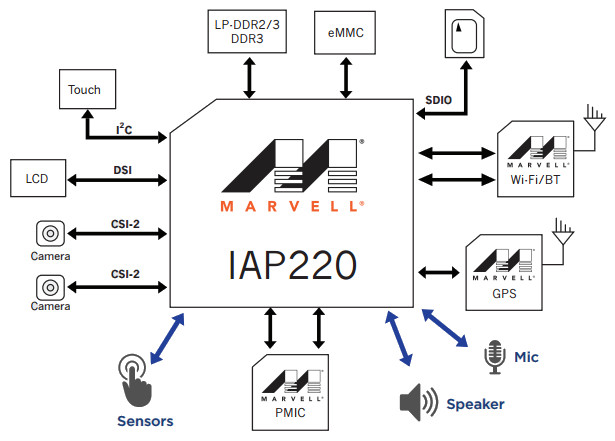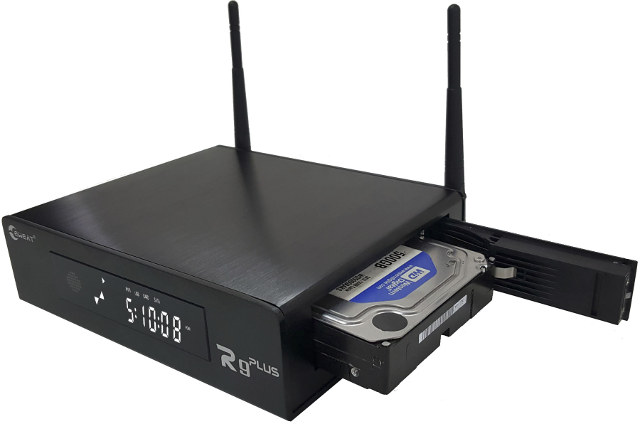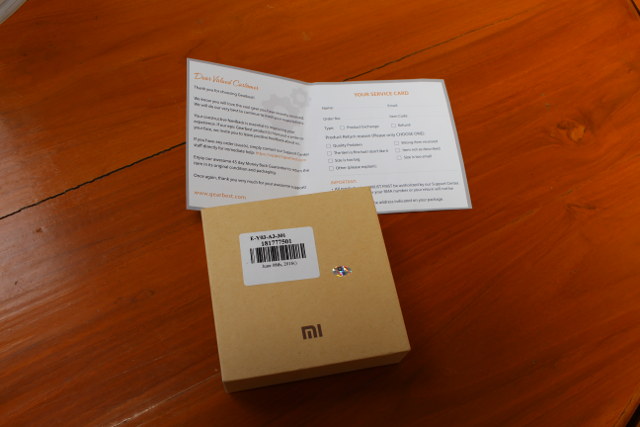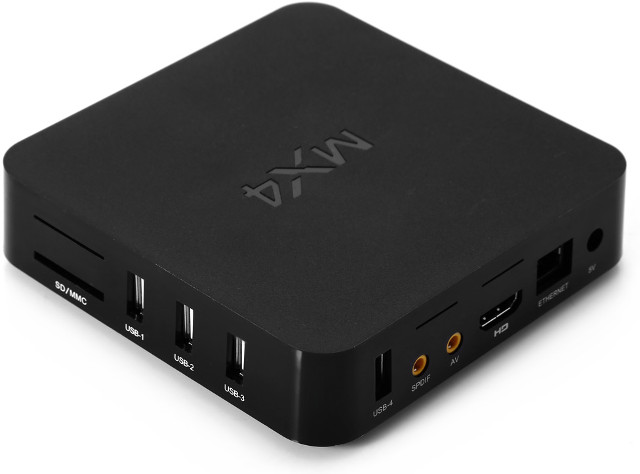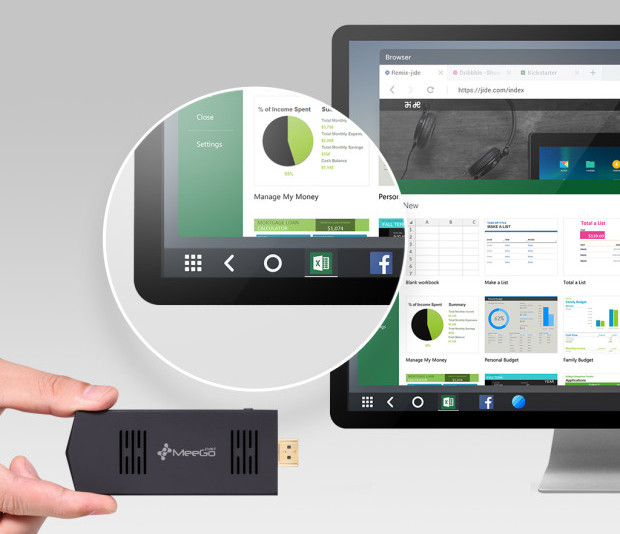VP9 is starting to become a first class citizen as more and more ARM SoC, such as Amlogic S905X and Hisilicon Hi3798C V200, are getting 4K VP9 hardware video decoding support. I’ve already tested 4K VP9 in Amlogic S905X based NEXBOX A5, and today I’ll report my results with Sunhed S3 TV box based on the new Hisilicon processor. I won’t do a full review yet, as just like NEXBOX A5, it’s still an engineering sample, and the firmware is not quite ready for public release. For example, Google Play is working, but I could not install YouTube, and Kodi 16.0 (likely a custom version) would not start, even after clearing the cache and data. Anyway, I tested 4K VP9, as well as 4K H.265 and H.264 since the last two codec are also here to stay. I first tried to play over SAMBA through the Gigabit Ethernet connection, but […]
Aeroscope is a Bluetooth 4.1 Wireless Oscilloscope Probe Using your Android Tablet or iPad for Display (Crowdfunding)
Oscilloscopes used to be rather bulky equipment, but recent full featured oscilloscopes have come down in size, and even become portable and battery operated with products such as DSO Quad. But since many of us already own Android tablets or iPads, Aeroscope wireless oscilloscope probe is quite a neat solution as it transmits images of the waveform over Bluetooth 4.1 to your tablet. Aeroscope specifications: Analog Bandwidth – 100 MHz Sample Rate – 500 M samples/second Connectivity – Bluetooth 4.1 with 200-ft range Input Range – +/-40 V DC Accuracy – +/- 3% Offset Range – +/- 40V or +/- 20V offset for 20mV/div setting Sample Memory Depth – 10k Input Impedance – 10MΩ || 12pF Resolution – 20 mV/division to 10 V/division Battery – 950 mAh battery good for 4 to 8 hours of use depending on settings Activity sensor – (for extended use) Dimensions – 118 x 30 […]
Marvell IAP220 “IoT” Processor Targets Low Power Touchscreen Enabled Appliances
After IAP140 quad core Cortex A53 processor found in Brillo compatible AndroMeda Box Edge, Marvell has recently introduced another IAP processor for the Internet of Things with IAP220 dual core Cortex A7 processor targeting “low power cost sensitive home automation, industrial, security, and wearable applications”. IAP220 SoC specifications: Processor – Dual ARM Cortex-A7 core up to 1.0 GHz GPU – 3D GPU with OpenGL ES 1.1/2.0 support MCU – ARM Cortex M4F Memory I/F – LP-DDR2/3, DDR3 Storage – eMMC and SDIO interfaces Display – MIPI video and command mode; LCD display Video – Full HD encode and decode with H.264, MPEG-4, H.263, MJPEG and more Camera – Digital video camera interface, 2x, 2-lane CSI Audio – I2S, TDM; support for multiple PDM (pulse-density modulation) microphones and speakers Sensor hub • Low power sensor processing Management I/O – SPI, GPIO, PWM? (the product brief says PWD instead), UART, 1-wire, I2C […]
EWEAT R9 Android Media Players and Recorders Feature Realtek RTD1295 Processor with HDMI 2.0, SATA, USB 3.0, Gigabit Ethernet, and More
Eweat has now introduced three TV box models based on Realtek RTD1295 64-bit processor with Eweat R9, Eweat R9 mini, and Eweat R9 Plus, bringing some competition to the upcoming Zidoo X9s TV box, with respectively an external SATA port, no SATA, and an internal SATA bay. All three devices share most of the same specifications: SoC – Realtek RTD1295 quad core Cortex A53 processor with ARM Mali-T820 MP3 GPU System Memory – 2GB DDR3 Storage R9 Mini – 8 GB eMMC + SD card reader R9 – 16 GB eMMC + SATA 3.5 connector for external drive + SD card reader R9 Plus – 16 GB eMMC + internal 3.5″ SATA 3.0 bay + SD card reader Video I/O – HDMI 2.0a output, HDMI 2.0 input, and AV Audio I/O – HDMI, AV, optical S/PDIF output Video Playback – HDR, 10-bit HEVC/H.265 up to 4K @ 60fps, H.264 up […]
Xiaomi Mi Band 2 Fitness Tracker Unboxing
Xiaomi started selling Xiaomi Mi Band 2 fitness tracker with an OLED display last week in China for 149 CNY (~$23), but it can also be purchased overseas with the many online resellers, and one of them, GearBest sent me a sample for review, and sells it for $33.91 with coupon GBMI2 once oversea shipping, currency conversion, and possibly some margins are included. Today, I’ll start by taking some pictures of the devices and its accessories, before writing a review in a couple of weeks after testing the device features and battery life. I received the device in a typical Mi package, and GearBest also included a User service card to encourage people leaving feedback, and helping with returns and issues. That’s the first time I receive this card, so maybe GearBest is trying to improve their customer service. The product is definitely geared towards the Chinese market, as the specifications […]
MX4 TV Box Based on Rockchip RK3229 Processor Is Selling for $25 (Promo)
There are a few Rockchip RK3229 based Android TV boxes selling for around $30, which are mostly interesting to play high bitrate 4K 10-bit H.265 or 10-bit H.264 videos, and there’s currently a promotion that shaves about $5 off the normal price of MX4 TV Box, bringing the price down to $24.99 shipped. MX4 TV box specifications are basically the same as MQX-4K, even up to the location of connectors, but with a different wireless module: SoC – Rockchip RK3229 quad core ARM Cortex A7 processor @ 1.5 GHz with ARM Mali-400MP2 System Memory – 1GB DDR3 Storage – 8GB NAND flash + SD card slot up to 32GB Video Output – HDMI 2.0 up to 4K2K @ 60 fps, and 3.5mm AV output (composite) Audio Output – HDMI, AV, and coaxial S/PDIF Connectivity – 10/100Mbps Ethernet, 802.11 b/g/n WiFi + Bluetooth 2.1 (Realtek RTL8703) USB – 4x USB 2.0 […]
MeegoPad A02 Remix OS TV Stick Has Now Launched on Indiegogo for $39 and Up
MeegoPad A02 octa-core Remix OS first launched in China for as low as 199 CNY ($30), and the company has raised around 107,000 RMB (~$16,300 US) so far. In the meantime, they’ve also launched the product on Indiegogo for a ~25% markup for cheapest pledge as the 1GB RAM/16GB Flash is offered for $39 + shipping, instead of $30 + shipping in China. The specifications have not changed much (some features have been clarified), and there are still two models with different memory and storage capacities: SoC – Allwinner A83T octa-core ARM Cortex-A7 @ 1.6 GHz with PowerVR SGX544MP1 GPU System Memory / Storage 1GB DDR3L + 16 GB eMMC flash, and micro SD slot up to 128GB OR 2GB DDR3L + 32 GB eMMC flash, and micro SD slot up to 128GB Video Output – HDMI 1.4 up to 1080p60 Audio Output – HDMI, 3,5 mm headphone jack Connetivity […]
Lenovo Phab 2 Pro Tango-Enabled Smartphone to Sell for $500 in Q3 2016
Project Tango uses computer vision to enable mobile devices to detect their position relative to the world using 3D maps of the world created in real-time using 3D depth cameras. Google and Lenovo had already announced a Tango phone would be launched later this year during CES 2016, and the companies have now officially introduced Lenovo Phab 2 Pro, the world’s first Tango-enabled smartphone, scheduled to start selling worldwide in September for $499 and up. Lenovo Phab Pro 2 specifications: SoC – Qualcomm Snapdragon 652 Tango Edition processor with 4x ARM Cortex A72 cores @ up to 1.8 GHz, 4x ARM Cortex A53 cores, and Adreno 510 GPU System Memory – 4GB RAM Storage – 64GB flash Display – 6.4″ display with 2560×1440 (QHD) resolution Audio – Dolby Atmos / 5.1 audio capture via 3 microphones with 360 voice noise-cancelling (Note: How can you record 5.1 audio with only 3 […]




